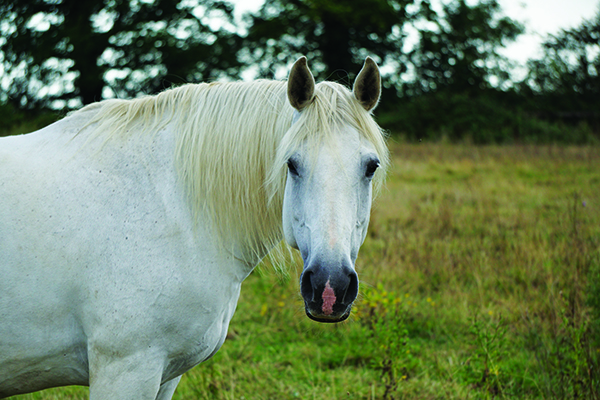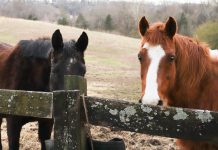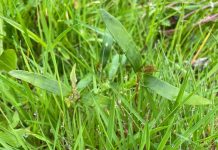Grass is in abundance in most parts of the country, thanks to near perfect growing conditions but this can be far from ideal for our horses, say the nutrition experts at SPILLERS®. With rates of obesity thought to be as high as 70% in some populations of ponies, it’s invariably weight loss rather than weight gain that’s needed to keep most of our horses healthy and this means cutting back on the grass.
“Recent studies suggest that weight gain more than doubles the risk of horses and ponies developing laminitis,” said Clare Barfoot RNutr, the research and development manager at SPILLERS®. “Excess weight can also have other negative consequences from increasing the risk of insulin dysfunction to poor performance. So it’s crucial, from many aspects, not to let our horses get fat.”
Ideally horses and ponies should have healthy body condition throughout the year which means allowing them to follow natural fluctuations in condition; losing it in winter to make way for natural weight gain in the spring. But researchers have found one of the biggest stumbling blocks is that owners are often very poor at recognising that their horse is overweight and also tend to underestimate overall intake, particularly from grass.
“Having an objective conversation with your vet or nutritionist about your horse’s weight is a very good start point,” says Clare. “Instead of feeling offended if you are told your horse is overweight, take control of the situation. Learning how to body condition score and then doing it regularly, as well as using a weigh tape or taking photographs, will help you notice any changes promptly allowing you to take immediate steps to stop it getting out of hand.”
Follow Clare’s ten practical tips based on the latest research, to take control of your horse’s weight:
- Use winter wisely every year and allow your horse to lose weight naturally. Being able to see your horse’s ribs is healthy as you enter spring and will give some scope for natural weight gain when the grass starts to grow.
- Restrict grazing because grass in its growing stages is highly calorific:
- Consider turning out overnight when there is likely to be less water soluble carbohydrate (WSC- sugar and fructan) in the grass but keep an eye on the amount out of time you turn your horse out for as the lower level of WSC may be negated if you are turning them out for 16 hours rather than eight hours during the day.
- Strip graze to restrict the amount of accessible grass and consider back fencing to make grazing restriction more effective.
- Turn out for longer on sparser paddocks with lower quality grazing rather than on lush pasture for a limited time, to prevent binge eating.
- Try a grazing muzzle remembering to introduce it carefully and not use it for more than 12 hours per day. Ensure it’s worn for the duration of your horse being turned out to avoid compensatory eating once the muzzle has been removed.
- Assess faecal output daily to check for changes in pasture intake when you have restricted the grazing. The latest research suggests you need to see a decrease of around half to result in weight loss if the horse previously had unrestricted access to pasture.
- Don’t use rugs because very few horses actually need them in summer even if it’s raining! Instead allow your horse to naturally shake off a few pounds by keeping warm, as nature intended.
- Feed alternative forage to horses and ponies at very high risk of laminitis. Ideally remove them from pasture altogether and feed a suitable forage/ short chopped fibre, preferably one that has been approved by the Laminitis Trust.
- Invest in forage analysis to make sure you know the nutrient and WSC content of the hay or haylage you plan to use for your weight loss programme.
- Weigh forage before feeding having first discussed with your vet the appropriate percentage bodyweight ration your horse needs to promote weight loss. (If soaking start with 20% more dry weight as some dry matter will be lost post soaking).
- Increase exercise to a minimum of 25 minutes (15 minutes at brisk trot) five times a week to help keep your horse’s waistline in check and support a healthy metabolism.
- Provide nutritional support to ensure your horse has a balanced diet. The latest research recommends that a low calorie, protein, vitamin and mineral balancer should always be included in the diet of horses on restricted forage.
- Monitor your horse’s weight by regularly reviewing your weight loss programme with your vet or nutritionist. Use a weighbridge for accuracy and then assess and record weight weekly using body condition scoring and a weigh tape.











